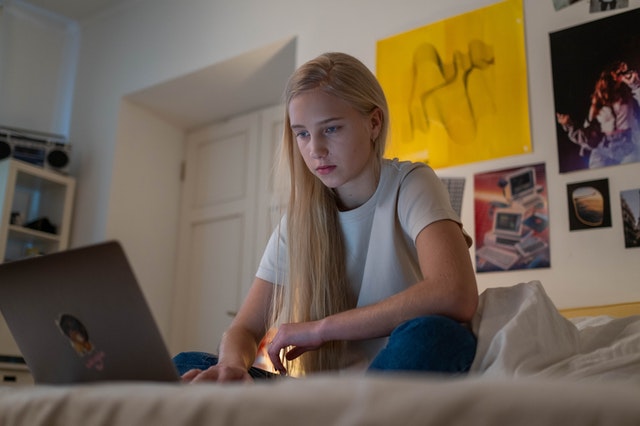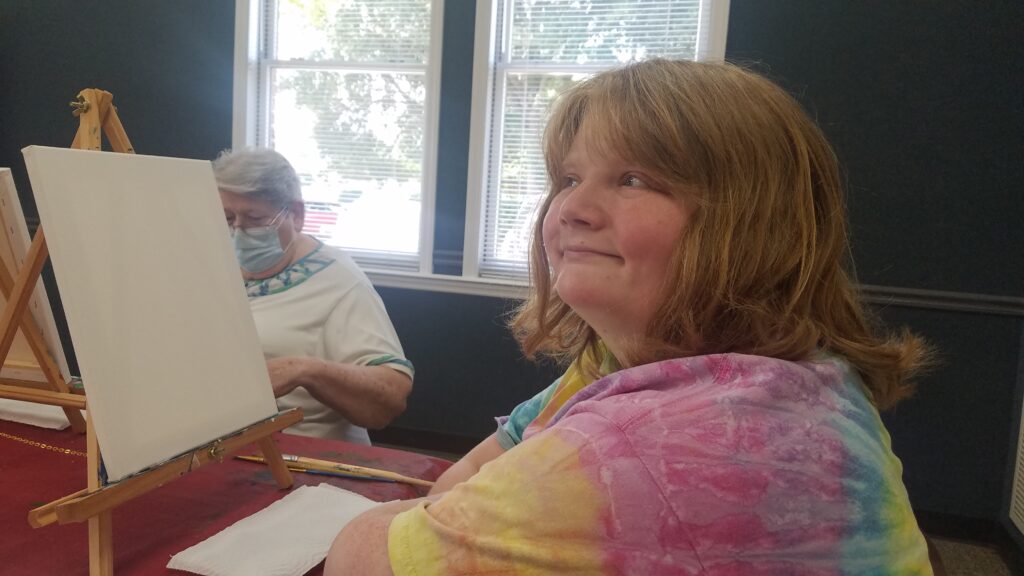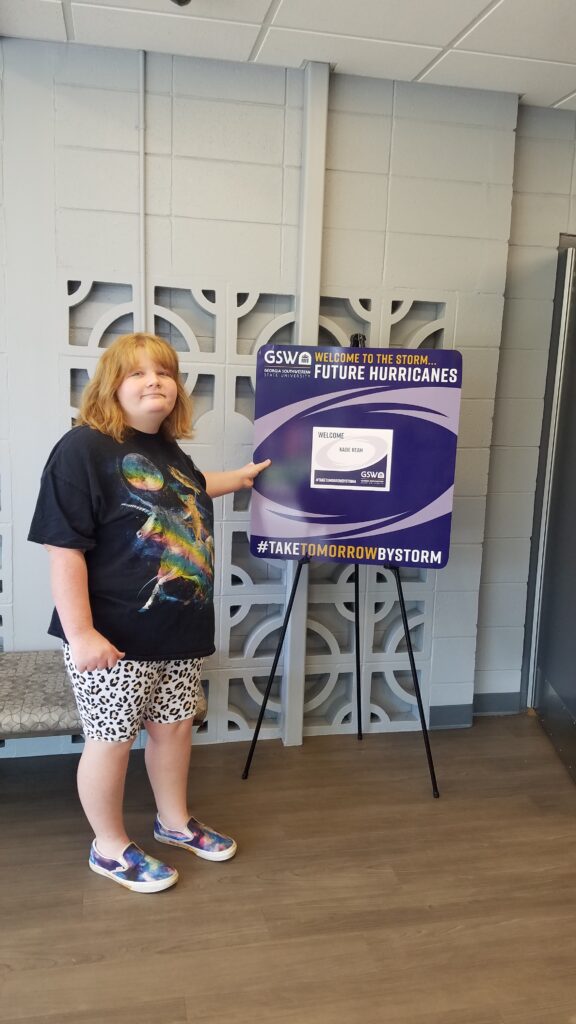
Could a break from screens give relief to my daughter with autism who was suffering from anxiety?
Years ago, we became a screen-free family. I define screen-free as my children using screens only for school, and only if required (meaning, if we can do something in a book, we will, if we can do it on paper, we do, etc). We do not regularly watch television, and if we do, it is rare and it is a family activity. My younger kids do not own or use smartphones. They do not play video games. The adults in our home use screens for work (I am typing this blog out on a screen now), but when at all possible, we avoid screens, AND, when the children are home, unless we are actively working, our screens are put away.
We made this choice because we saw some very negative effects from video games and iPads in our 2nd and 3rd grade boys years ago, before the change.
If it wasn’t broken, why fix it?
But my daughter, Kasie, who has Autism (and anxiety), appeared to be doing fine. She owned a smartphone and a Nintendo DS and she watched movies while at her Dad’s. We reasoned that she needed these devices to soothe herself, and she was performing well in school, so why rock the boat?
Kasie continued to do well in school, and while she was at our home, she didn’t play video games or watch many movies (except at family times when movies were played), but at her Dad’s and while at college (the last few years), she continued to do whatever worked for her. Because it was working. Right?
Fast forward to 2020 when everything changed for everybody. Kasie’s world was turned upside down by the sudden death of her father. She needed to soothe herself more than ever, so we allowed screens or movies or Nintendo, or whatever it was we thought she needed to get through that terrible time. She was in shock, traumatized, and grieving. (Kasie will probably ask me to add that on the same day she lost her father, she lost her beloved dog, Ernie, too. It was literally the worst day ever. No lie.)
For months, my motto continued to be, “Whatever she needs.” Having lost my father suddenly almost exactly a year before, I thought I knew what to expect, and I thought I understood how we would be on a wild roller coaster of emotions for several months to a year, and then things would begin to even out…but never be the same. So I settled in, happy to sleep with her, or watch movies with her, cry with her, read books with her. Whatever she needed.
Autism and Anxiety that increased in response to grief and trauma
As months turned into a year and we began to have some distance from that terrible day in Kasie’s life, I noticed that things were not getting better. They were getting worse. Her anxiety increased almost daily. Her perseverative behaviors – the rocking, hand flapping, and pacing were going on throughout the day and night. She was losing sleep.
Kasie was always a good student, and she was struggling more at school. It wasn’t just the material (it was harder at her new school, that’s for sure), but she struggled to remember quizzes, tests, and assignments that we had put on her calendar together. She got THREE zeroes for regular quizzes that she just forgot to take. It wasn’t like her. She had been in college for two years at that point, and she rarely missed class and had never had a zero on an assignment.
I became concerned when I would try to discuss simple things with her about formatting a lab report. The same lab report that was due every other week and had to be formatted the same way each time. It seemed like she couldn’t remember simple tasks. Some days, she needed to be reminded to go to class at the right time. The professors were complaining that she was arriving to class late. It wasn’t like her. Nothing seemed right.
I knew that she was grieving and she was not herself, but, based on my own journey, I felt like there should be some good days mixed in with the bad. Some relief for her in between the difficult days. And it seemed to me that there were more bad days than good, and the bad days were getting, well, badder.
On top of it all, her anxiety was increasing. Some days, she seemed straight out agitated. She was so worked up when she finally came home, all she did was pace at night when she couldn’t sleep. She would walk back and forth, touching the same two spots on her bedroom wall until the spots had little grey fingerprints on them. It was heartbreaking to watch her struggle through her grief, and I was at a loss. What could I do?
She was in counseling with multiple therapists, she was taking prescribed medications, following every one of their guidelines, she was exercising daily, exploring social outlets, creating expressive artwork, resting.
Nothing seemed to be helping and she was getting more and more desperate for a break from the constant feeling like she had to run for her life. And that’s what it looked like for days, weeks, and months on end. My daughter was so terrified of SOMETHING that she felt like a frightened little bunny that needed to dash away from impending danger. Except that there was nothing chasing her, and nowhere to run.
Could the screens be compounding her autism and anxiety?
It wasn’t until this summer that it hit me that her use of screens, specifically the tiny, blue screen of her smartphone, could be overstimulating her brain and causing her anxiety. I had seen the tremendous effects of removing screens in my youngest son’s life. His aggression dissolved into creativity and affection in only a few month’s time after we took his screens away. We went from fearing him and his tantrums to enjoying him.
But for my daughter, I dismissed the dangerous and negative effects of screens because I believed she NEEDED them to soothe herself due to the autism and anxiety. She’s been this way since she was a baby, and I’ve sat in so many doctor’s and therapist’s offices with other parents as we handed our tablets and smartphones to our autistic kids to keep them from rocking, flapping, and humming in the presence of others. Anything to diminish these socially “unacceptable” behaviors. Plus, we wanted our kids comfortable, and the screens seemed to immediately satisfy (or pacify) them. It was just what they needed. We were parents going above and beyond and we knew what was best for our kids…or at least we were trying our absolute best. And every parent I knew with an autistic kid was allowing screens. Nobody told me otherwise. And she was doing so great!
But in 2020, she wasn’t. And 2020 progressed into 2021, and she was feeling no relief.
A few small changes yield great results for individuals with Autism and Anxiety
So I reached out to Dr. Victoria Dunckley, author of Reset Your Child’s Brain. I explained Kasie’s story to her and asked her opinion. She encouraged me to have Kasie read the book. After all, she’s 20 years old. And she’s brilliant. What if she reads it and forms her own opinion on what’s best for her brain?
So, I introduced the book to Kasie, read a chapter or two of the book with her, and then left it in her room for her to look through.
Never underestimate the power of a self-determined young woman.
Because next thing I know, Kasie is waking up every morning and “gently” reminding me with lists of things she needs me to teach her to do.
“This is just a gentle reminder to show me how to log on to my patient portal for my psychiatrist.”
“This is just a gentle reminder to show me how to log on to my library account.”
Day by day, she was bombarding me with request after request. But I didn’t put two and two together until she asked for a ride to the library one day. She had requested some books and they were ready for her to pick up.
Staying busy without screens
Then, she started familiarizing herself with the events calendar of the church, the zoo, and the library. She got involved in, well, like, everything. She started calling friends and people who would or had supported her via text through these difficult times. I started hearing her have long phone calls every day.
She asked me to take her to the gym every day, and in addition, she started walking the trails behind our house in the mornings before the sun got too hot.
And then there was the day she brought a library book in the car, and I saw her throughout the day reading it, instead of scrolling through scientific articles on her phone.
Now it’s the norm. A book instead of a screen. A friend instead of a video. A call instead of a text.
She’s still using her phone, but she is making a conscious choice every time her anxiety peaks to choose wisely, something that doesn’t increase it.
Keeping tabs on the anxiety
We’ve been charting her anxiety on a daily basis. She rates it on a scale of 1 to 5, 5 being the worst anxiety she’s experienced. A 1 on the anxiety level would be a dream come true. We haven’t experienced that yet. I know that with her being an adult with autism, anxiety is something she will have to get familiar with managing. Twenty percent of adults with autism are diagnosed with anxiety disorders compared to 7.8% of their neurotypical counterparts. I expect those numbers to continue to increase for both populations as screens become more prevalent and younger and younger children pick them up to soothe and entertain themselves.
Screen use overstimulates the brain, causing a heightened state of anxiety and arousal. This is especially true for those with autism, anxiety, and other neurological disorders.
So for Kasie, screen use has made her recovery from the trauma of her father’s death (something uncontrollable that also overstimulates her nervous system) even more difficult and prolonged. Kasie’s initial response to this overstimulation was to soothe herself with more screens, which in turn, overstimulated her brain even more. It was a self-perpetuating cycle (for a person with autism) of anxiety-inducing, habitual use.
Our experience isn’t science, but it’s real and it’s ours
And there wasn’t much information out there to lead us in the direction of removing screens. Which leads me to this post. Here I am. I am not a medical doctor or a psychiatrist. But I can tell you that in MY OWN EXPERIENCE, first with my two neurologically typical boys followed by my experience with my autistic daughter, that screens overstimulate the brain. My kids were agitated, distracted, hyper, and overreactive. I was the mom who had to pay babysitters more than I was making at my job to watch my kids or never see that babysitter again! On screens, the boys were always fighting, bashing, breaking, yelling, and screaming. On screens, my autistic daughter would seem placid. The anxiety behaviors of rocking, pacing, and flapping would seem to calm down. But what we didn’t know was that deep inside, her brain was being overstimulated, and her sleep was disturbed. Her anxiety was increased, even though it didn’t show because her body was placated by this little screen. It was like all of the energy that used to be consumed by the stimming behaviors was now directed toward her amygdala, and it was in “zombie apocalypse mode.” Kasie always felt like she was running for her life, and her painting games and reading and answering scientific questions on quora were causing it.
It seems so crazy it can’t be true, but we see it now that we’re charting her anxiety. Like I said, on a scale of 1 to 5. She still has bad days, she had one yesterday. And sure enough, when we look back at her screen use on a bad day, it is significantly greater on those days. For my daughter, there is a direct correlation between heightened anxiety and screen use. And there could be for your loved one, too.
Can screens mimic autism in a neurotypical brain?
With emerging talk about virtual autism and the insanely disturbing increase in autism diagnoses, I encourage and urge all parents, of neurotypical and non-neurotypical children to reconsider screen use. Screen overuse is harmful to all persons. Of course, we adults must use screens, but we do not need addictive social media, video games, and the like. We are wasting hundreds of productive hours (per month, per year?) on these things. We are handing over all of our productivity, potential, and possibly our mental health to these huge conglomerates. These huge companies are selling our browsing data, what we read, how long we look at things, the number of keystrokes in our comments, and they are getting fat off our addiction, while our kids (and oftentimes, ourselves) develop mental health disorders.
Stop the insanity people.
If my grieving daughter, who has every excuse in the world to hide in her bedroom and surf the net to escape the cruelty of the real world, can CHOOSE FOR HERSELF to minimize her screentime and change her life (she starts her volunteer job at the local zoo on Monday, and starts her new school with a new major found by taking career aptitude tests and researching careers by checking out books from the local library), then you too can put down that tiny screen and embrace your own life – in the real world.
There are no more excuses.
#putitdown

Kasie reading one of her library books in the car. She has an almost obsessive curiosity about everything that can easily be satisfied with a library card. 
Kasie at a painting class hosted at our local library. 
Kasie checks out a new college. 
Kasie inside a really cool canyon. 
Kasie headed out to a volunteer interview with a book stuffed in her purse. 
Kasie reading a book on being a teacher.
One thought on “Autism, Anxiety and Screen Use: Our Summer Experiment”
Comments are closed.